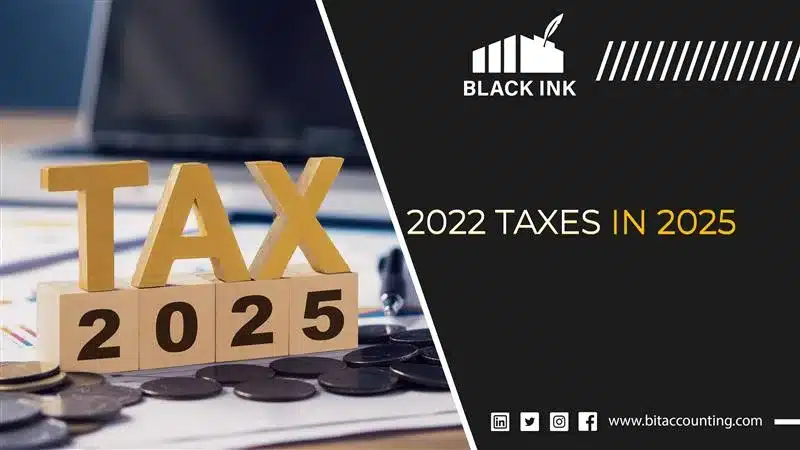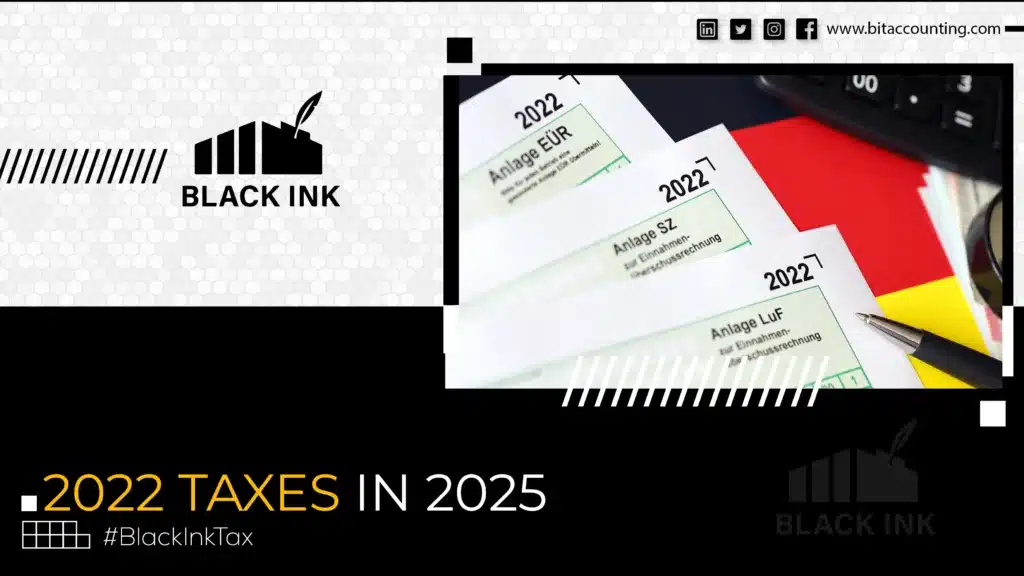
Table of Contents
Tax Filing 101: Can I File My 2022 Taxes in 2025?
It’s tax season again, but you’re buried under work deadlines, a recent move, or family issues. You think, “I’ll deal with my taxes next year.” Fast forward, and suddenly it’s 2025, and you’re still wondering about your 2022 taxes.
This raises the big question many procrastinators face: “Can I really file my 2022 taxes in 2025?”
Yes, you can. But here’s the truth: filing years late is less about catching up and more about damage control. Whether you were due a refund or owed money makes all the difference. In this guide, we’ll break down how filing late works, what penalties you face, the deadlines you can’t miss, and the exact steps to get back on track.
Can You File 2022 Taxes in 2025? Technically You
Let’s get straight to it: the IRS doesn’t block you from filing past returns. You can submit prior-year tax returns at any time. But here’s the catch—you can’t e-file your 2022 taxes in 2025.
- Why not? The IRS closes electronic filing for older returns after November of the following year. That means the window to e-file 2022 taxes shut in late 2023.
- What now? You’ll need to file by paper. This involves downloading the correct 2022 forms (Form 1040 and any schedules), filling them out manually, and mailing them to the IRS address that matches your state.
The process is slower, mistakes are more common, and waiting for confirmation takes weeks—or even months.
But before you dive in, you need to answer one crucial question: Did the IRS owe you money, or did you owe them? Your outcome depends entirely on that.
Scenario 1: If You Are Owed a Refund for 2022
Good news first: if you were due a refund, you’re not in the worst position.
- The Three-Year Rule: The IRS gives you three years from the original deadline to claim a refund. For your 2022 taxes, the filing deadline was April 15, 2023. That means the last possible day to claim your 2022 refund is April 15, 2026. Filing in 2025 keeps you safely within that window.
- What if you miss it? The consequence is permanent. After April 15, 2026, the refund is gone for good. The U.S. Treasury keeps it, and you can’t appeal.
- Silver lining: The IRS doesn’t penalize you for filing late if you’re due a refund. You’ll still get your full refund amount as long as you file in time.
If you think money is waiting for you, don’t waste another year. File as soon as possible so you don’t risk losing it.
Scenario 2: If You Owe Taxes for 2022 (The Dangerous Scenario)
Now here’s the tough part: if you owed the IRS for 2022 and are just filing in 2025, the financial fallout is serious.
The Two-Pronged Attack of Penalties
- Failure-to-File Penalty – The biggest hit. It’s 5% of your unpaid taxes per month, up to a maximum of 25%.
- Failure-to-Pay Penalty – Smaller, but it adds up. 0.5% per month until it caps at 25%.
- Interest – On top of both penalties, the IRS charges daily compounded interest on the total owed.
Example:
- You owed $10,000 in April 2023.
- By March 2025, you’re 24 months late.
- Failure-to-File Penalty: 25% = $2,500
- Failure-to-Pay Penalty: 0.5% x 24 months = 12% = $1,200
- Subtotal = $13,700 before interest.
- Interest easily adds $1,000+, bringing the total to about $14,700.
And here’s the kicker: the penalty clock started the day after the April 2023 deadline. By 2025, you’ve already dug a deep hole.
If you owe, filing now isn’t about saving money—it’s about stopping the bleeding before it gets worse.

The Other Severe Consequences of Filing Late
The IRS isn’t just about penalties. Filing late can trigger other long-term problems:
- Audit Risk: Filing years late can flag you for closer IRS review.
- Refund Seizure: Future refunds (say, from your 2024 or 2025 return) can be grabbed to cover past-due taxes.
- Credit Damage: If your tax debt lingers, the IRS can file a federal tax lien. This crushes your credit score, making it harder to buy a house, car, or even get a credit card.
- Lost Documents: The longer you wait, the harder it gets to track down W-2s, 1099s, and receipts from 2022.
- Social Security Impact (Self-Employed): If you didn’t file, your self-employment income won’t count toward Social Security benefits. That could reduce your retirement or disability payments later.
The Special Situations and Exceptions
Not everyone misses the deadline for the same reason. The IRS recognizes special cases:
- Disaster Relief: If you lived in a federally declared disaster area in 2022, the IRS may have extended your deadline.
- Living Abroad: U.S. citizens abroad usually get until June 15, 2023, with an option to extend to October.
- Payment Plans: If you owe and can’t pay in full, the IRS offers installment agreements. This stops the Failure-to-Pay penalty from getting worse.
- Penalty Relief: If you’ve been compliant in past years, you may qualify for a “First-Time Abate,” which removes certain penalties. A tax professional can help you request this.
Your Step-by-Step Action Plan for Filing 2022 Taxes in 2025
Here is the detailed step-by-step action plan for filing 2022 taxes in 2025:
Step 1: Don’t Panic, But Act Fast
You can’t undo the delay, but every day counts. Filing sooner reduces more penalties and interest.
Step 2: Gather Your Documents
- Get W-2s and 1099s from past employers or request them from the IRS transcript tool.
- Collect receipts, mortgage statements, and other deduction records from 2022.
Step 3: Get the Correct Forms
Only use 2022 tax forms from IRS.gov. Forms from later years won’t work.
Step 4: Prepare and File
- Consider hiring a CPA or Enrolled Agent. They can navigate penalties and request relief.
- If filing yourself, use tax software that supports old returns. Remember: you’ll need to print and mail it.
Step 5: Mail Your Return Safely
Send it via certified mail with return receipt. Keep copies for your records.
Step 6: Handle the Balance
- If you’re due a refund: celebrate—you filed just in time.
- If you owe: explore IRS Direct Pay, payment plans, or installment agreements immediately.
Conclusion
So, can you file your 2022 taxes in 2025? Yes. But the consequences vary greatly depending on whether you were owed money or owed the IRS. If you expect a refund, you still have until April 15, 2026—but don’t delay. If you owe, the penalties and interest are already piling up, and acting fast is the only way to limit further damage.
The good news? You don’t have to tackle this alone. Professional tax help, like the experts at BIT Accounting, can guide you through filing late returns, negotiating penalties, and setting up payment plans. The sooner you act, the better your financial future will look.
FAQs
1: Can I still get my 2022 refund if I file in 2025?
Yes, as long as you file before April 15, 2026. After that, the refund is gone forever.
2: Can I e-file my 2022 taxes in 2025?
No. You must use paper forms and mail them to the IRS.
3: What if I can’t pay what I owe?
You can apply for an IRS payment plan. This reduces further penalties, though interest still applies.
4: Will filing late trigger an audit?
Not automatically, but late returns can attract extra IRS attention.
5: Can the IRS take my 2025 refund to cover 2022 taxes?
Yes. They can offset your refunds against old debts.
6: What happens if I ignore my 2022 taxes completely?
You risk large penalties, interest, IRS collection actions, and even a federal tax lien on your property.
7: Should I hire a tax professional to file late returns?
Absolutely. A CPA or enrolled agent can help minimize penalties, ensure accuracy, and represent you if the IRS has questions.
GET FREE QUOTE FOR ALL OF OUR SERVICES
Black Ink will send you a free analysis of your current state and what would be the cost of managing either a separate accounting and bookkeeping services or a complete solution across New York, USA. Do get in touch and we will be happy to consult you with our bookkeeping services in NY, New York, USA.
